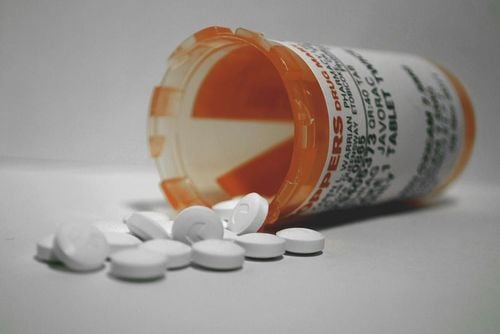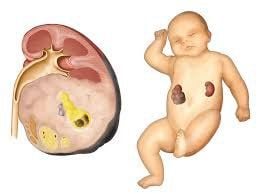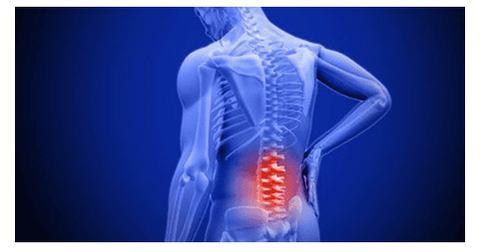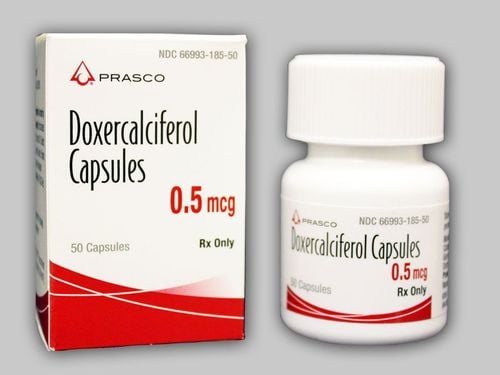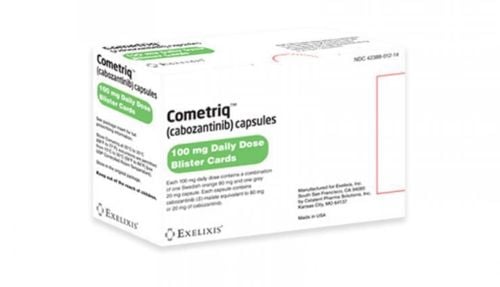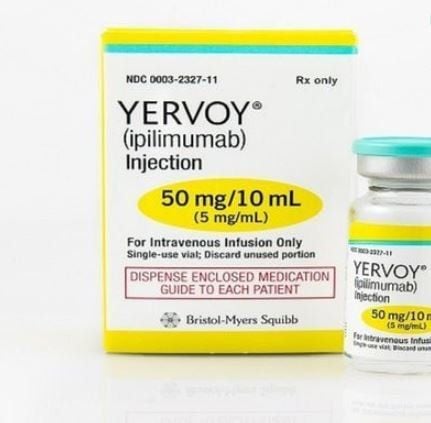This is an automatically translated article.
Pediatric nephroblastoma or Wilms tumor is a rare type of kidney cancer that occurs mostly in children 3 to 4 years old. Wilms tumor usually affects only one kidney, rarely in two kidneys at the same time. Over the years, advances in the diagnosis and treatment of Wilms' tumor have improved, so most children with Wilms' tumor are doing well.
1. What is nephroblastoma?
What is nephroblastoma? If the early cells of the kidney do not develop into glomeruli or nephrons, clusters of immature cells can form in the kidney when the baby is born. Normally, these cells mature by the time a child is 3 or 4 years old, but some cells can grow out of control, forming a mass of immature cells. This mass is called a nephroblastoma (English name is nephroblastoma) or Wilms tumor (English name is Wilms tumor).
Pediatric nephroblastoma is a common kidney cancer. Once cancerous, that means it can grow and spread to other parts of the body.
Nephroblastoma is usually found only after the tumor has grown to about 8 ounces in size, which is about 4 times the healthy kidney weight of a 3-year-old child. About 1 in 4 children with nephroblastoma when first diagnosed has metastasized to the lungs or liver.
2. Symptoms of nephroblastoma in children
Signs and symptoms of nephroblastoma in children vary widely and some children may not have any obvious signs. But most children with nephroblastoma have one or more of the following signs and symptoms:
Palpable abdominal mass Abdominal swelling Abdominal pain Other possible signs and symptoms include:
Fever Yes blood in urine Nausea or vomiting or both Constipation Loss of appetite Difficulty breathing High blood pressure
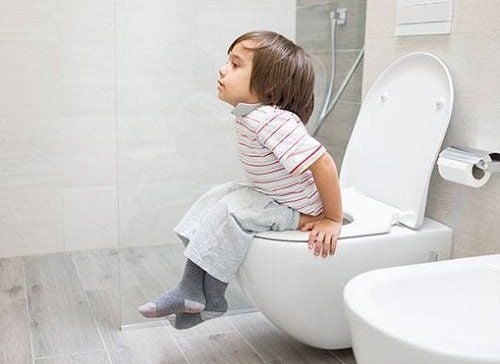
Bé mắc bệnh u nguyên bào thận có thể xuất hiện triệu chứng táo bón
3. Causes of Nephroblastoma
Currently, doctors do not know the exact cause of nephroblastoma in children, but genetics may play a role in causing this disease.
Cancer begins when cells grow abnormally in the body's DNA.
These abnormalities allow cells to grow and divide uncontrollably and continue to live while other normal cells die cyclically. These abnormal cells accumulate to form a tumor. In nephroblastoma, this abnormal growth occurs in the kidney cells.
In some cases, the abnormal development in the DNA that leads to the nephroblastoma tumor will be passed from parent to child.
4. Risk factors
Factors that may increase the risk of Wilms' tumor include:
African-American race. In the United States, African-American children have a slightly higher risk of developing nephroblastoma than children of other races. Asian-American children have a lower risk than children of other races. A family history of nephroblastoma. Hemihypertrophy, which means that one side of the body or part of the body is significantly larger than the other; WAGR syndrome. This syndrome is a combination of many different abnormalities including nephroblastoma, aniridia, genitourinary system abnormalities, urinary system and intellectual disability; Denys-Drash syndrome. This syndrome includes nephroblastoma, kidney disease, and male pseudohermaphroditism, in which boys are born with testes but may exhibit female features; Beckwith-Wiedemann syndrome.
5. Diagnosis of nephroblastoma
To diagnose nephroblastoma, the doctor may perform:
Check the child's abdomen for signs of tumor. Blood and urine tests. These tests do not detect nephroblastoma, but they assess how well the kidneys are functioning and detect some kidney problems or anemia. Diagnostic imaging techniques. These techniques create images of a child's kidneys to help doctors determine if a child has a kidney tumor. Imaging techniques include ultrasound, computed tomography (CT), or magnetic resonance imaging (MRI).
6. Treatment of nephroblastoma in children
Treatment for nephroblastoma in children usually includes: surgery, chemotherapy, and sometimes radiation. Treatment may vary according to the stage of the disease. Because this type of cancer is very rare, parents should take their child for treatment at a pediatric oncology medical facility that has experience in treating this type of cancer.
Surgery to remove all or part of the kidney
Treatment of nephroblastoma in children may begin with surgery to remove all or part of the kidney. After surgery, cells from the tumor may also be biopsied to determine if the cells are cancerous and what type of cancer is in the tumour.
Surgery for nephroblastoma may include:
Removal of part of the affected kidney. Partial nephrectomy involves removing the tumor and a small portion of the kidney tissue surrounding the tumor. Remove the kidney and surrounding tissue. In a radical nephrectomy, doctors remove the kidney and surrounding tissue, including part of the ureters, adrenal glands, and nearby lymph nodes. The remaining kidney can increase its capacity and take over the job of filtering the blood. Remove both kidneys. If the cancer affects both kidneys, the surgeon will remove as much of the cancer as possible. In some cases where both kidneys are removed, the child will then need periodic dialysis. In addition, the child can receive a kidney transplant if there is a suitable donor. Chemotherapy
Chemotherapy is the use of powerful drugs to destroy cancer cells throughout the body. Treatment for nephroblastoma usually involves a combination of different drugs that are given through a vein to kill the cancer cells.
The side effects the child may experience will depend on the medicine used. Common side effects include nausea, vomiting, loss of appetite, hair loss, and risk of infection.
Chemotherapy may be used before surgery to shrink the tumor and make it easier to remove. Chemotherapy is used after surgery to destroy any remaining cancer cells in the body.
For children with cancer in both kidneys, chemotherapy is given before surgery. This measure may increase the chance that the surgeon can save at least one kidney in order to preserve kidney function.
Radiation therapy
Depending on the stage of the tumor, radiation therapy may be used. Radiation therapy uses high-energy beams to kill cancer cells.
During radiation therapy, the child is placed on a table and a large machine moves around the child, which will aim energy beams at the cancerous tumor to bombard. Possible side effects of radiation therapy include: nausea, diarrhea, fatigue, and sunburn-like skin irritation.
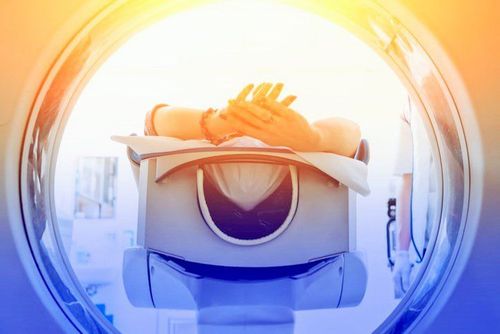
Xạ trị có thể điều trị bệnh u nguyên bào thận ở trẻ
Nephroblastoma in children is a very dangerous disease and develops very quickly into kidney cancer. Therefore, as soon as the child's body shows abnormal signs, you need to take the child to a reputable medical center soon for timely examination and treatment.
To register for examination and treatment at Vinmec International General Hospital, you can contact the nationwide Vinmec Health System hotline, or register online HERE.
References: mayoclinic.org; cancer.org
MORE:
Common kidney diseases Acute glomerulonephritis in children: What you need to know Kidney cancer: Causes, symptoms, diagnosis and treatment




